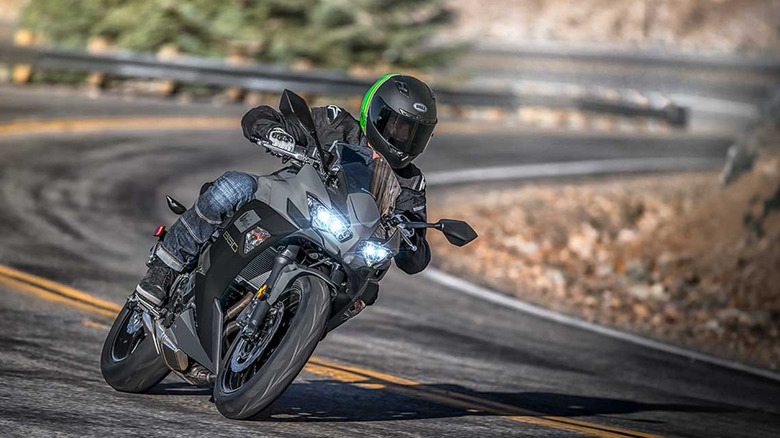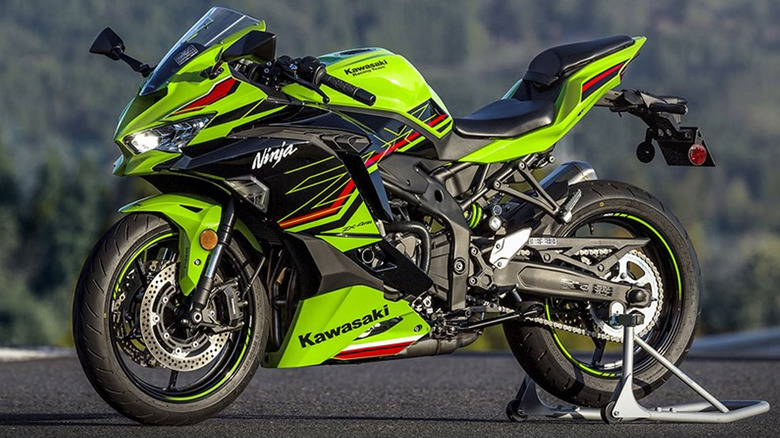Kawasaki Ninja ZX-4R Vs Ninja 650: Which Is Faster?
If speed is what you're looking for in a bike, the Ninja 650 and ZX-4R, along with the ZX-4RR, might be on your radar, and they're evenly matched when it comes to top speed in the U.S. The Ninja 650 boasts a 649cc engine, while the ZX-4R and ZX-4RR are equipped with the same 399cc power plant, but that doesn't tell the whole story. The Ninja 650 is heavier, with a curb weight of 423.4 lbs (421.2 for a non-ABS model), compared to 414.5 lbs for both the ZX-4RR and ZX-4R. A 10 pound difference might not seem like much, but it matters when maxing out the bike's performance.
On an airport runway, the ZX-4RR tops out at 131 mph, according to a test by RevZilla, and the same result was shown in Kawasaki's video. The Ninja 650 can also reach that 131 mph mark, according to Top Speed. While the two bikes hit the same top speed in the U.S., this isn't the case everywhere.
The ZX-4RR should be capable of more, and internationally, it is, with videos showing the bike hitting 150 mph thanks to its 76.4 horsepower output and 15,000 RPM redline. Unfortunately, the version available in Canada and the U.S. is hobbled with a mere 56 hp and 11,500 RPM.
There's more to the story than just speed
The Ninja 650 starts at $8,499, compared to $9,399 for the ZX-4R and $9,899 for the ZX-4RR. The ZX-4R strips back ZX-4RR features like adjustable suspension and color choice, plus it removes the bidirectional quickshifter. Outside of that, the two bikes are largely the same, including the engine.
The Ninja 650 is an impressive option and is arguably Kawasaki's most reliable bike. The ZX-4R is great for people looking for pocket-rocket aesthetics and track-day thrills. Neither option is among the fastest bikes Kawasaki has ever built, but they still pack a punch. As you'd expect, the 650cc unit boasts significantly more torque than the 400 – even in its full-fat form — with 47.2 ft-lb compared to 29 ft-lb.
The Ninja 650 is the heavier of the bikes, but it packs a nice blend of everyday use and sportiness — something that helps make it a solid motorcycle for seasoned riders. If you want to unleash the full power of Kawasaki's 400 screamer, you can flash the engine control unit (ECU) for about $250. But don't expect Kawasaki to honor your warranty if you go that route. The included warranty covers your bike for 12 months, so it's better to consider the change once that time has passed. On top of that, many states have noise regulations for motorcycles, and flashing your ECU could result in you exceeding them if you're not careful. Be aware that modding your bike in this way is likely to increase or invalidate your insurance.

